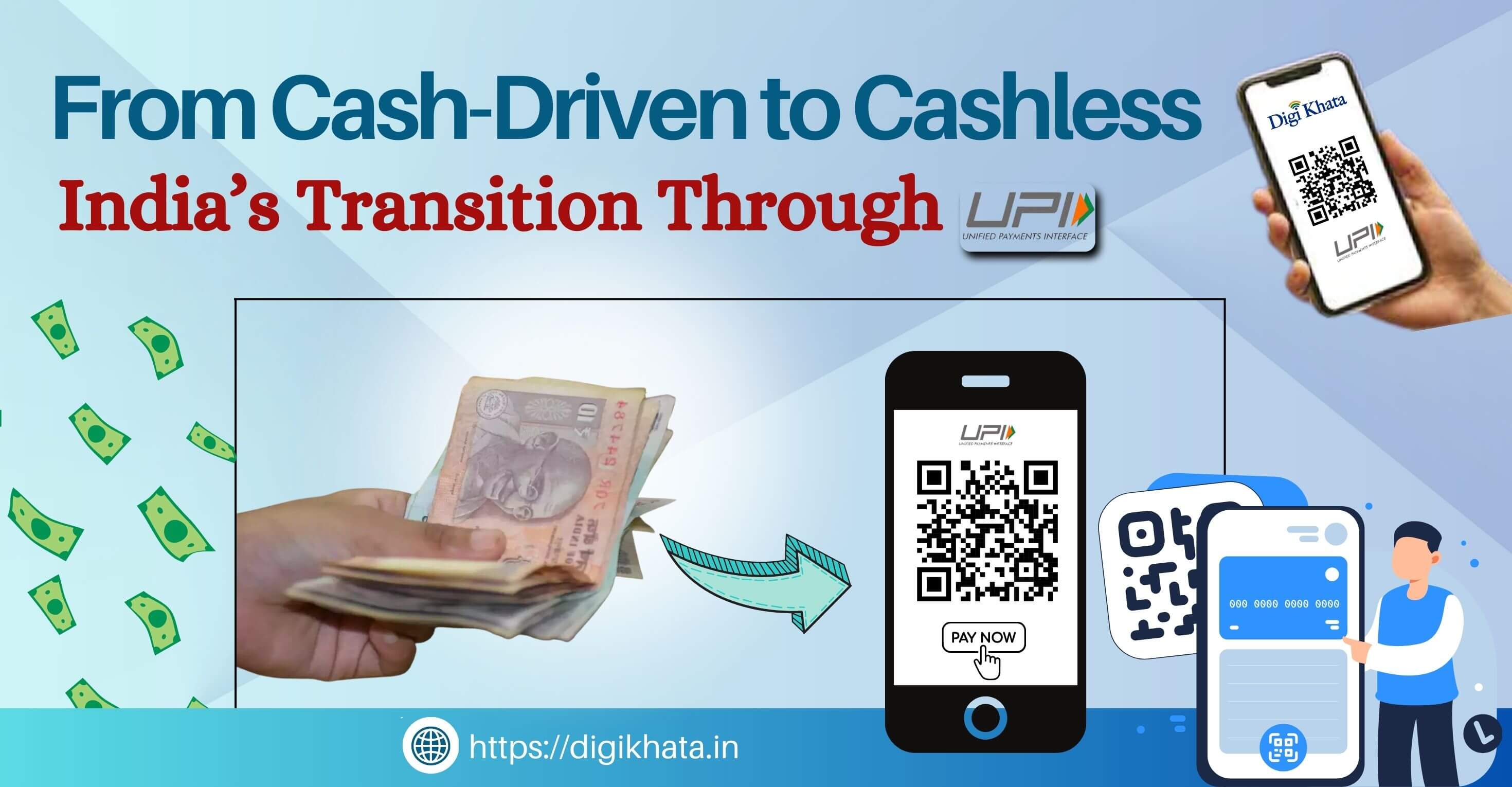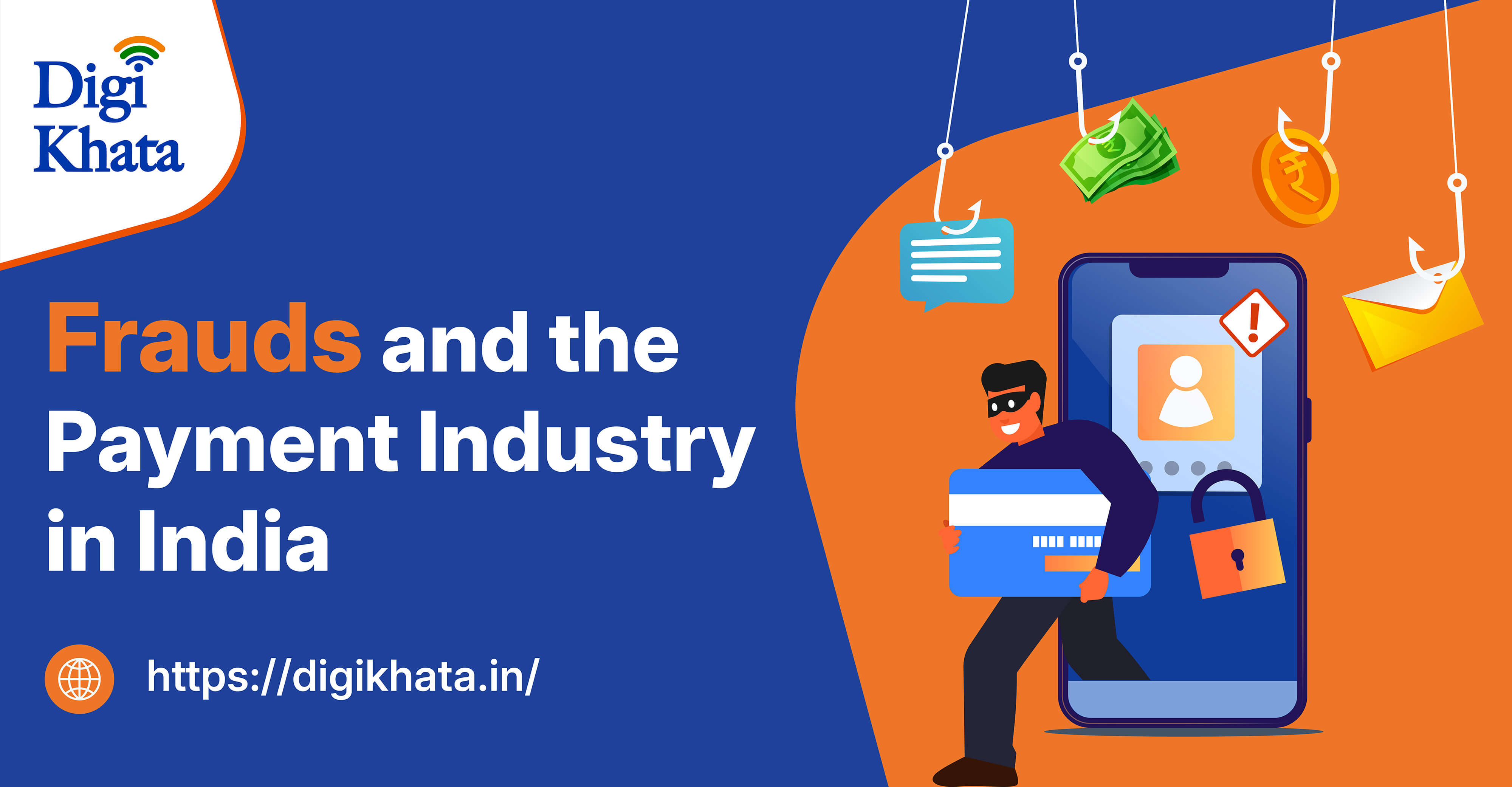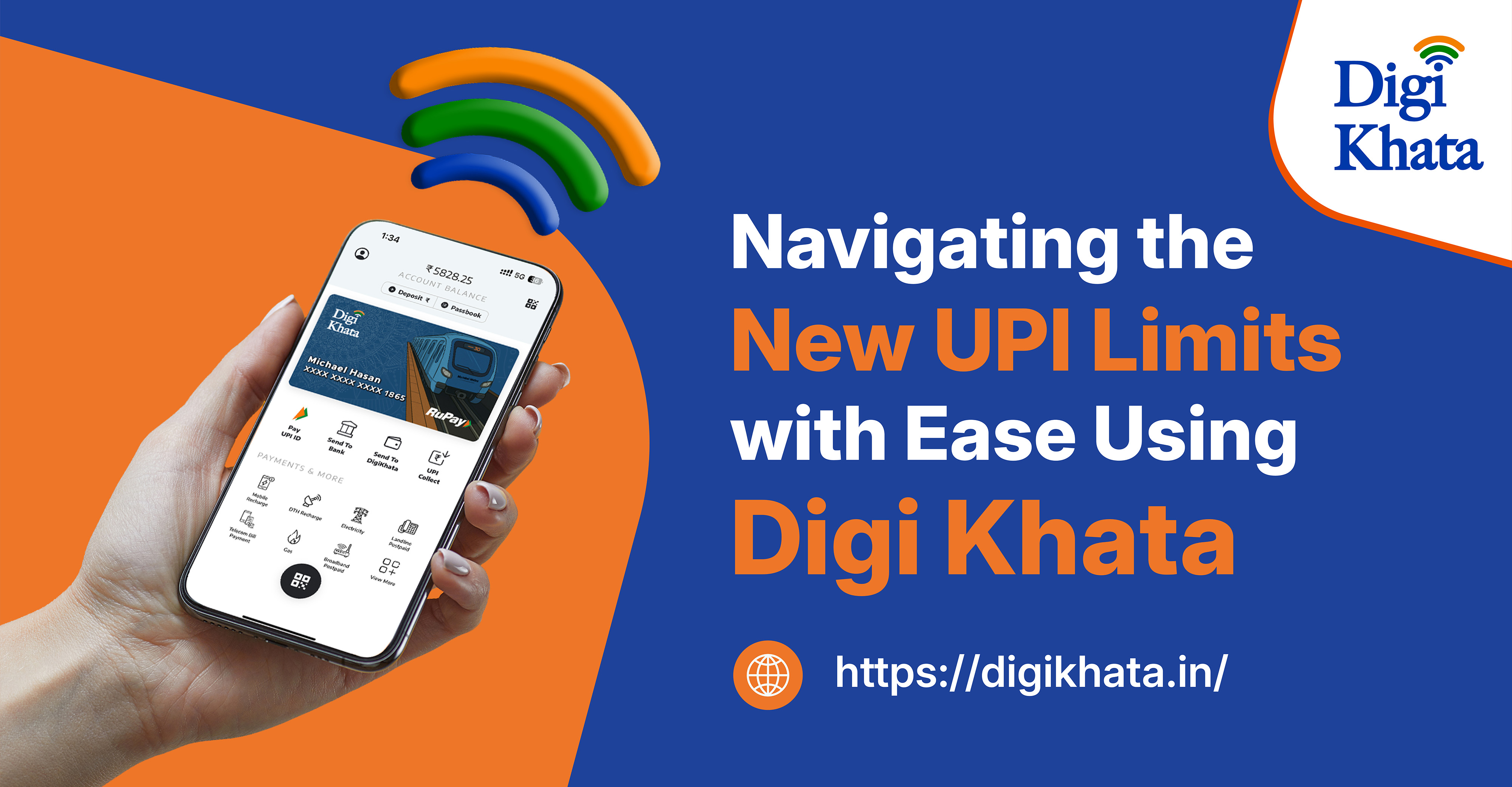Sep 30, 2024
From Cash-Driven to Cashless: India’s Transition Through UPI

India's journey from being a cash-driven economy to embracing digital payments has been remarkable. In the span of just a few years, the country's financial landscape has been transformed by the Unified Payments Interface (UPI), a revolutionary system that has made cashless transactions simple, secure, and accessible to all. UPI has emerged as one of the most significant developments in India's fintech ecosystem, driving the nation toward a cashless future.
The Pre-Digital Era: India’s Cash-Driven Economy
Before the digital revolution, India was predominantly a cash-driven society. With over 90% of transactions conducted in cash, financial inclusion was a challenge, particularly in rural areas. The dependence on physical currency also came with problems like counterfeit currency, high costs of managing cash, and inefficiencies in the economy. Moreover, a large segment of the population lacked access to banking services, which further compounded the problem.
The need for a seamless, inclusive, and secure payment system became increasingly apparent. While debit and credit cards existed, their usage was limited, primarily in urban areas, and most transactions were still cash-based.
The Birth of UPI: A Game-Changer in Digital Payments
In 2016, the National Payments Corporation of India (NPCI) launched UPI with the aim of making digital transactions more accessible and bringing the country closer to financial inclusion. UPI allowed users to link their bank accounts to mobile devices and make real-time transactions using just a smartphone and a Virtual Payment Address (VPA), eliminating the need to share sensitive banking information. It enabled seamless peer-to-peer (P2P) and merchant transactions, with just a few clicks.
The UPI system quickly gained traction due to its simplicity and ease of use. Unlike traditional online banking, which required multiple steps for each transaction, UPI transactions could be completed instantly using a single mobile app. This shift made digital payments more convenient and allowed even those without a deep understanding of financial systems to participate.
Demonetization: A Catalyst for UPI’s Growth
A major catalyst for UPI’s rapid growth was the Indian government’s demonetization policy in November 2016. The decision to withdraw ?500 and ?1,000 currency notes from circulation overnight created a severe cash crunch in the economy. As people scrambled to find alternatives to cash, digital payment systems, including UPI, gained prominence.
Demonetization forced both individuals and businesses to explore cashless payment options, leading to a significant uptick in the use of UPI. In the immediate aftermath, UPI transactions surged, and the platform's adoption continued to grow steadily in the years that followed. This event marked a pivotal moment in India’s transition toward becoming a cashless society.
The Evolution of UPI: From Small Transactions to Large-Scale Adoption
In the initial stages, UPI was primarily used for small transactions like splitting bills, sending money to friends, or paying local vendors. However, as the platform evolved, its use expanded to a variety of other sectors. Today, UPI is widely used for merchant payments, utility bill payments, online shopping, government services, and even international remittances.
The rise of UPI-based apps like PhonePe, Google Pay, Paytm, and BharatPe has also contributed significantly to its success. These apps have simplified the user experience and brought UPI to a larger audience. Merchants, from small roadside vendors to large corporations, have embraced UPI for its ease of use and low transaction costs, making it a ubiquitous payment method across the country.
Financial Inclusion Through UPI
One of the most notable benefits of UPI is its contribution to financial inclusion. India, with a vast rural population, has long struggled to bring banking services to its underbanked and unbanked citizens. UPI has addressed this challenge by enabling even those without access to traditional banking infrastructure to engage in digital transactions using only a smartphone.
The government's focus on digital literacy and the proliferation of affordable smartphones have played key roles in ensuring that UPI reaches every corner of the country. The Pradhan Mantri Jan Dhan Yojana (PMJDY) initiative, aimed at providing banking services to the unbanked, has complemented UPI’s efforts by ensuring that more people have access to bank accounts, which are necessary to use UPI.
Security and Trust: Key Pillars of UPI
While the convenience of UPI has driven its adoption, its robust security framework has been instrumental in building trust among users. UPI transactions are highly secure, protected by two-factor authentication, encrypted communication channels, and a unique UPI PIN. Moreover, the NPCI continuously monitors transactions to prevent fraud and ensure the integrity of the system.
The integration of UPI with the Reserve Bank of India’s (RBI) real-time gross settlement system has further enhanced its security, making it a reliable method for large-value transactions as well. The government has also introduced various regulatory measures to protect consumers, reinforcing UPI’s position as a secure digital payment platform.
The Road Ahead: UPI’s Role in India’s Cashless Future
As India continues its journey toward becoming a cashless economy, UPI will undoubtedly play a central role. The system has already evolved significantly since its inception, and future developments are likely to focus on expanding its reach, enhancing its functionality, and integrating with emerging technologies.
One area of growth is the international expansion of UPI. The NPCI has initiated partnerships with several countries to enable cross-border payments using UPI. This move will not only facilitate international remittances but also strengthen UPI’s position as a global payment platform.
Another area of focus is increasing UPI’s usage in sectors like agriculture, healthcare, and education, where cash transactions are still prevalent. By providing digital payment solutions tailored to these sectors, UPI can further reduce India’s reliance on cash and promote economic efficiency.
Open Instant UPI Account with Digi Khata: Your Gateway to a Cashless Future
As India moves from a cash-driven economy to a cashless society, Digi Khata empowers you to be part of this transformation. With Free Digital Account opening, you can quickly get started with digital payments. Just like UPI has revolutionized payments in India, Digi Khata offers Instant account opening to ensure fast and secure transactions. You can Create UPI ID Online within minutes and enjoy hassle-free, real-time payments anytime. Don't miss out on India’s digital payment wave—Open Instant UPI Account with Digi Khata and experience the convenience of secure, cashless transactions that are reshaping the nation!
Digi Khata simplifies your financial journey with instant, secure UPI payments, making it easy to go cashless. Embrace the future of digital transactions with effortless Free Digital Account opening and seamless payments. Join millions who trust UPI and Digi Khata to handle their day-to-day transactions with ease and reliability.
Conclusion: UPI’s Transformational Impact
In conclusion, India’s transition from a cash-driven economy to a cashless society has been remarkable, with UPI at the forefront of this digital revolution. By simplifying and securing digital payments, UPI has fostered financial inclusion and revolutionized the way India conducts transactions. As UPI continues to grow, expand internationally, and integrate into diverse sectors, it promises to play a key role in driving India's cashless future. Platforms like Digi Khata are vital in this transformation, enabling individuals and businesses to access fast, secure, and convenient digital payments through features like Free Digital Account opening and Instant UPI accounts. Together, UPI and Digi Khata are empowering millions to participate in and benefit from India’s evolving digital economy.
Read Also: Open Google Pay Account Online & Explore Paytm, Bharatpe
 Sep 16, 2025
Sep 16, 2025
 Aug 28, 2025
Aug 28, 2025
 Dec 25, 2024
Dec 25, 2024

